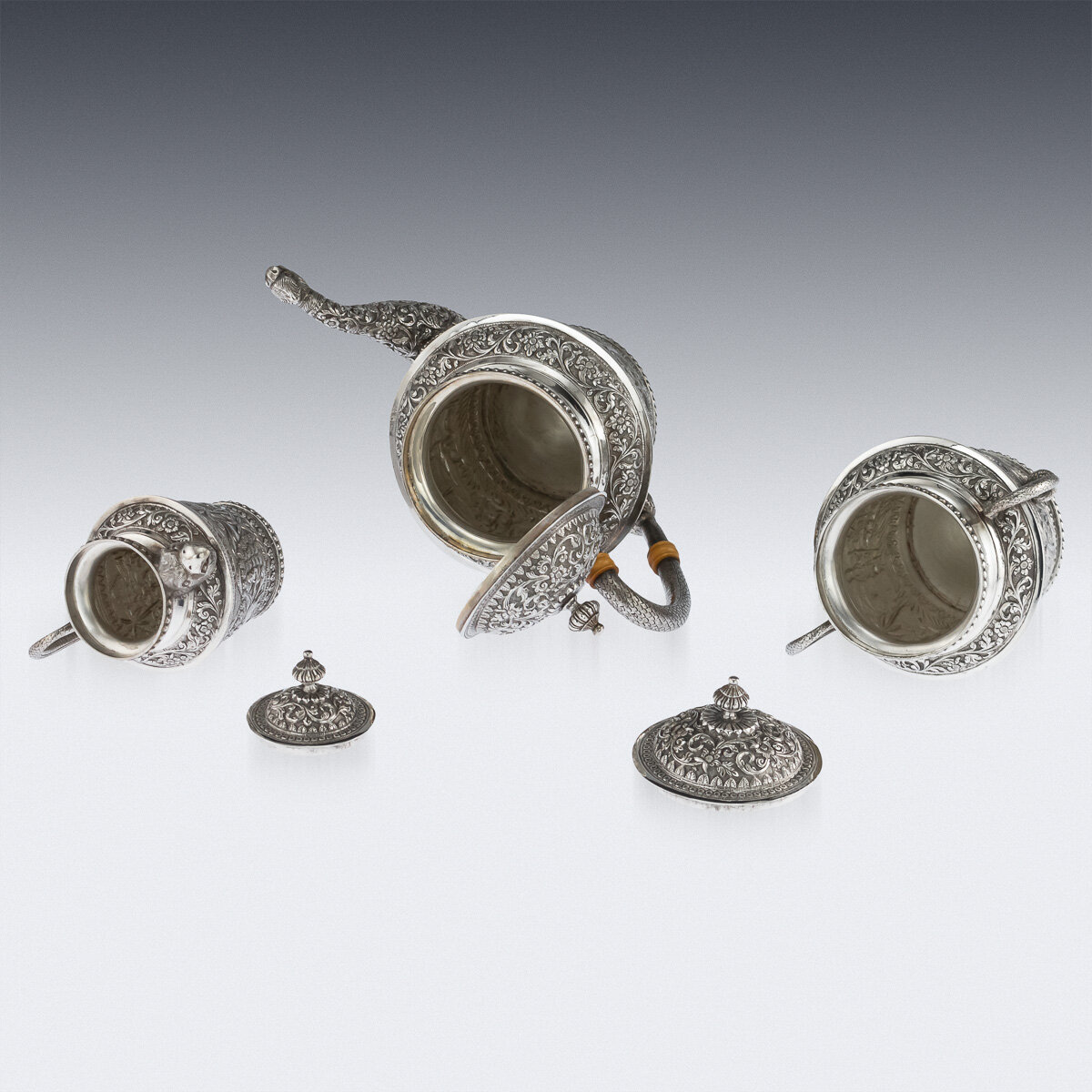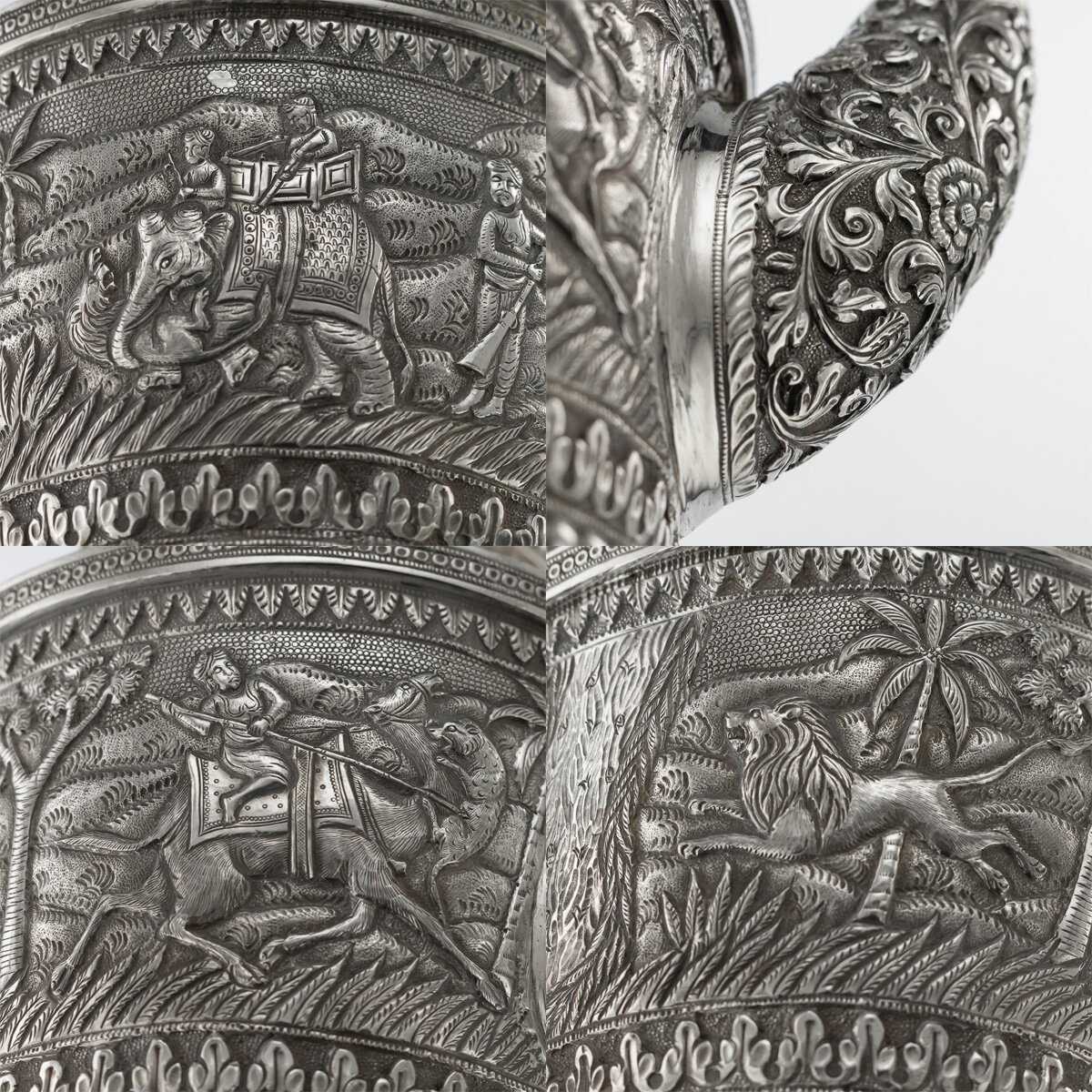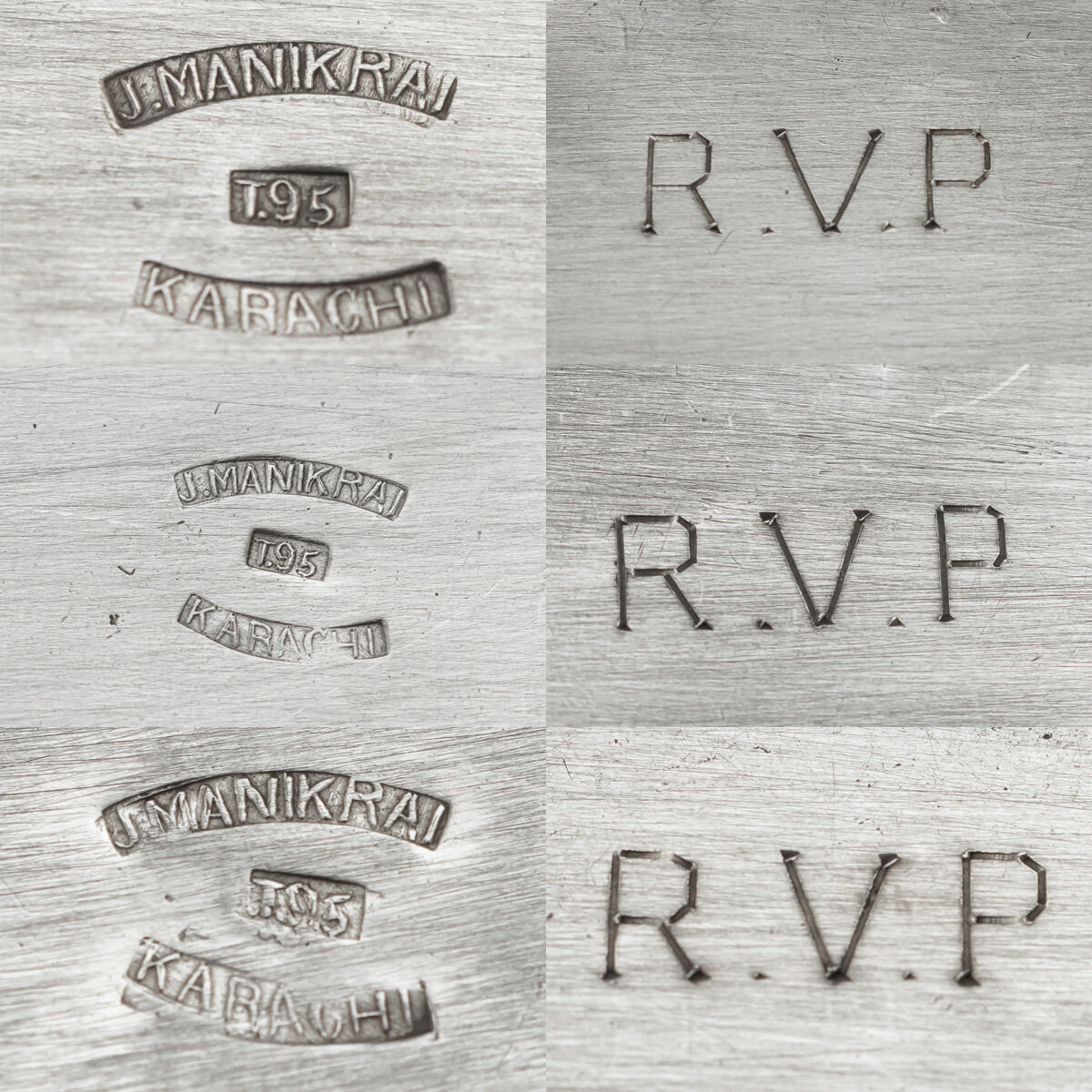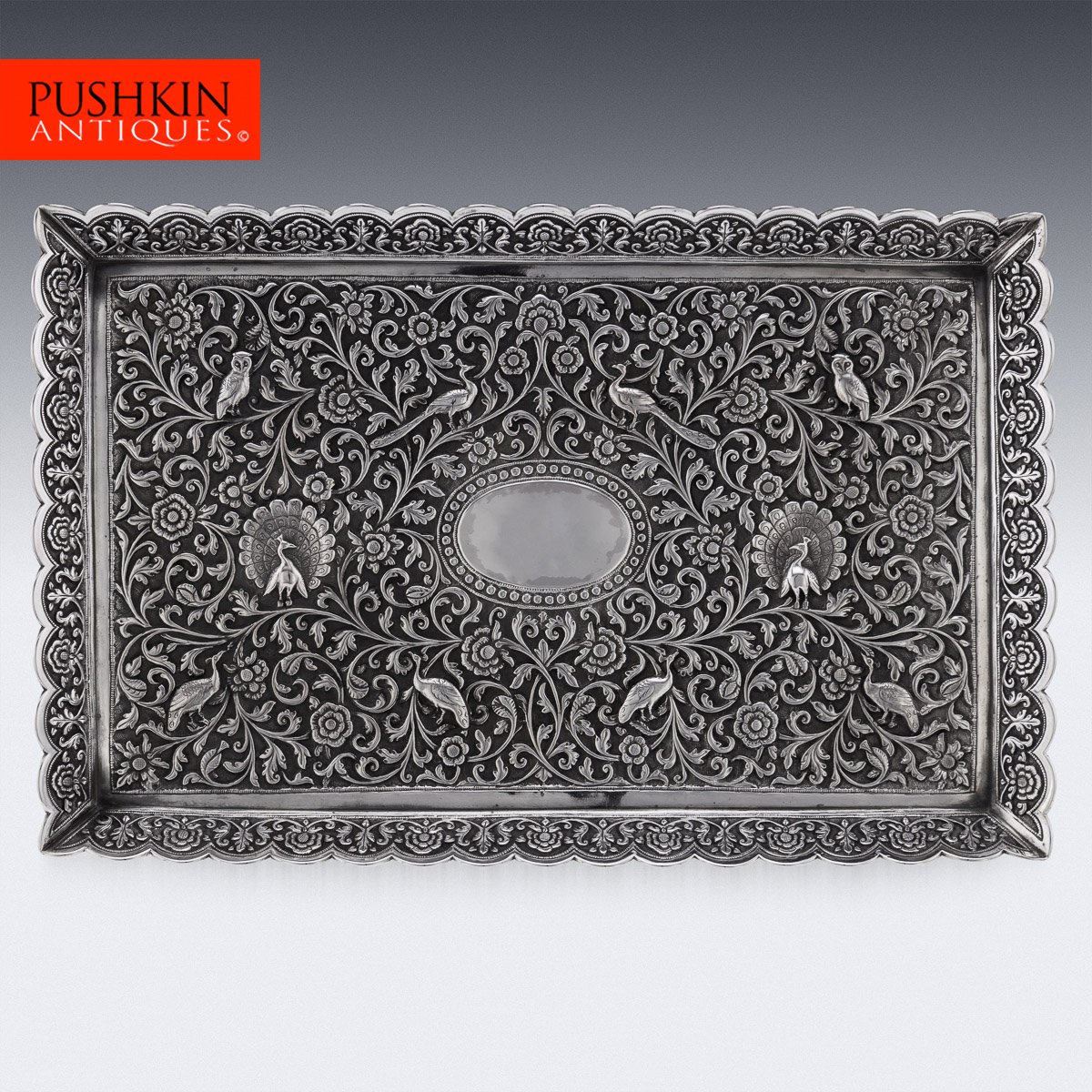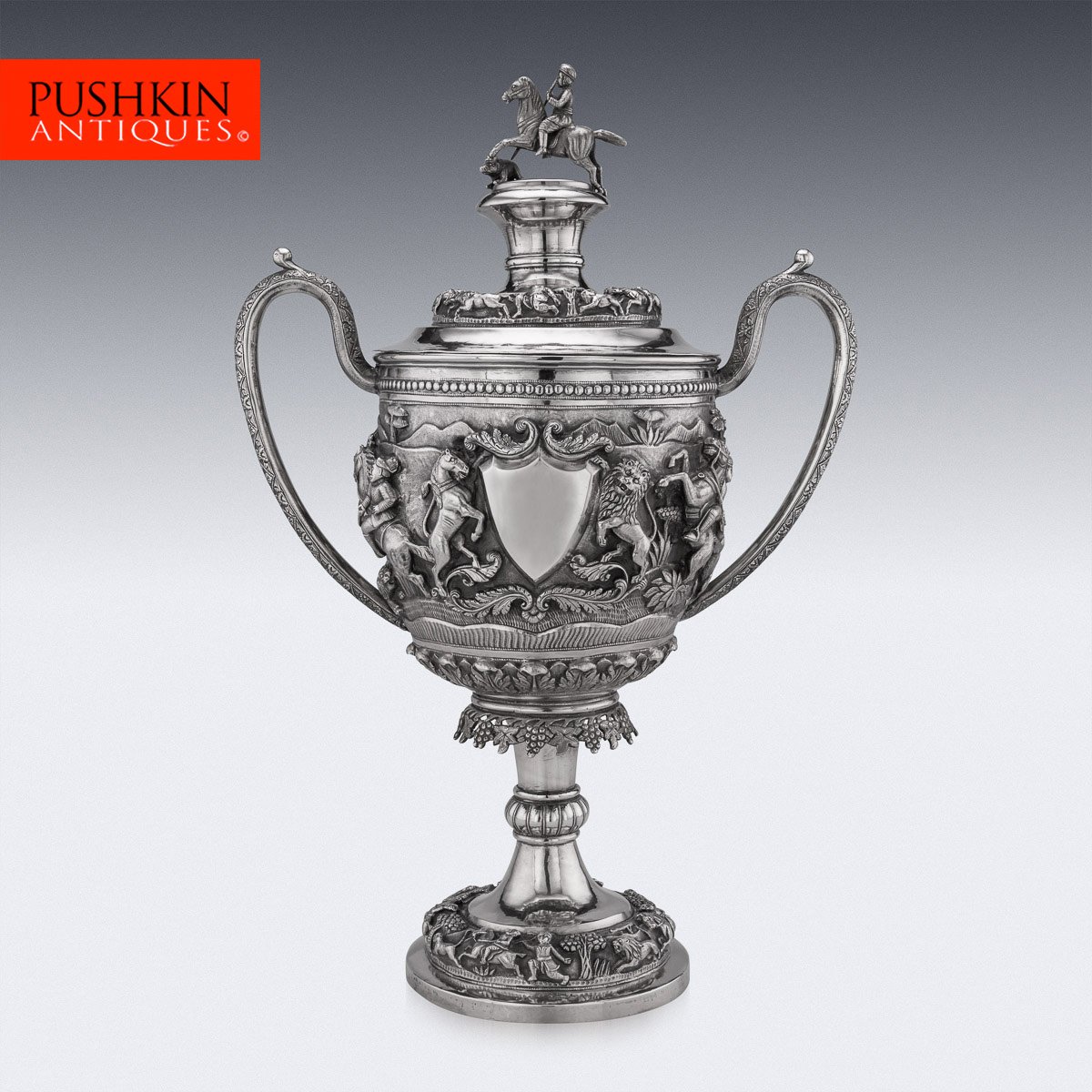ANTIQUE 20thC INDIAN KARACHI-CUTCH SOLID SILVER TEA SET, J MANIKRAI c.1900
20th Century Indian Karachi-Cutch silver repousse tea set, comprising of a teapot, lidded sugar bowl and lidded cream jug, each piece is profusely and beautifully repousse' decorated with scrolling foliage, beaded boarders and the body chased with various hunting scenes on a tooled matted ground, snake shaped handles, bird head spouts and the lid surmounted with bulb finials.
Hallmarked J. Manikrai, engraved initials R.V.P.
Reference Number: A6111
DESCRIPTION
Antique early-20th Century exceptional Indian Karachi-Cutch solid silver repousse tea set, comprising of a teapot, lidded sugar bowl and lidded cream jug, each piece is profusely and beautifully repousse' decorated with scrolling foliage, beaded boarders and the body chased with various hunting scenes on a tooled matted ground, snake shaped handles, bird head spouts and the lid surmounted with bulb finials. Each piece is very heavy and finely crafted, made by one of the most prominent Karachi-Cutch silversmiths. All pieces hallmarked J. Manikrai, (silversmith formerly of Cutch, later of Karachi, Pakistan), T95 (900+ high grade silver), engraved initials R.V.P.
Because of the nature of the city's development by the British government Karachi has no ancient history. Like the silverware produced in Bombay, the work of Karachi is greatly influenced by Cutch designs. As a result of the exhibition of 'Karachi-Cutch' silverware design the regions silverwork was soon established and known to demonstrate a high standard of craftsmanship.
The Karachi-Cutch style differs from Cutch design as the ornamentation is often separated into panels by unadorned borders while the Cutch style of the intermingling of flowered foliage and animals filled these panels. Often, if depicting a scene of hunting, unlike the Cutch and Bombay counterparts, the Karachi-Cutch style would depict the whole scene and not just a single composition.
J. Manikrai & Co is an example of the firms established by economic refugees in Karachi, after the 1899 Cutch famine. After they settled in cities like Karachi, Cutch silversmiths began to exhibit works in various Indian exhibitions. J. Manikrai & Co won the 1909 silver medal in one such show in Lahore. As a consequence of this exposure, the trade in 'Karachi- Cutch' silver was soon established. The Karachi-Cutch use of patterning differed from the classical Cutch style. The panels of scrolling foliage and the animals of the chase are set against a background of hills and trees. Unlike Cutch style, these panels are separated by plain arches. The silverwork by Cutch silversmiths working in Karachi was often of a very high standard and the carefully presented compositions were worked with skill and patience in slightly deeper relief than that of Cutch work from other regions.
CONDITION
In Great Condition - No Damage.
SIZE
TEAPOT
Height: 17cm
Width: 26 x 15cm
Weight: 630g
SUGAR BOWL
Height: 16cm
Width: 16 x 12cm
Weight: 460g
CREAM JUG
Height: 13cm
Width: 12 x 9cm
Weight: 295g






